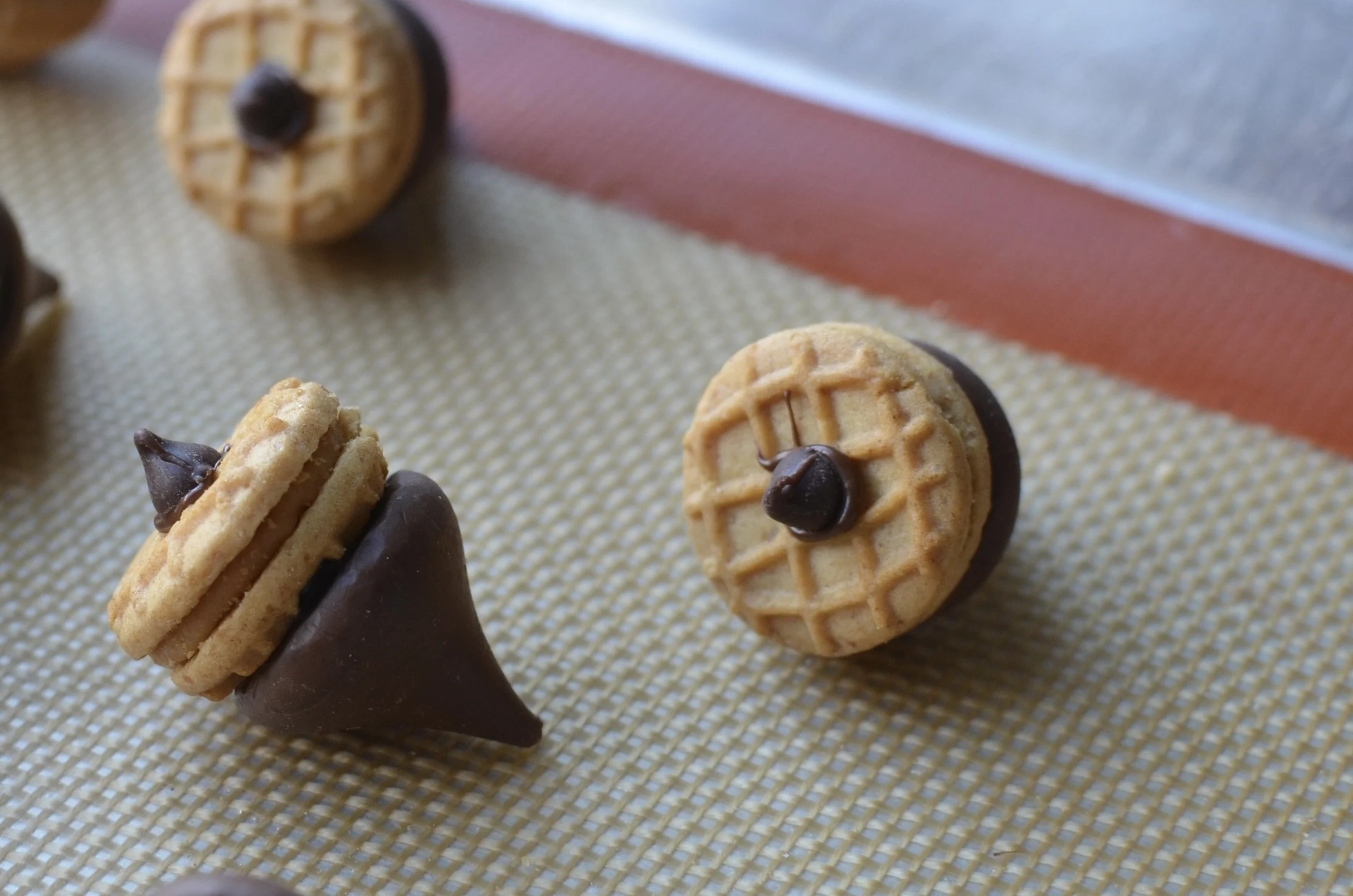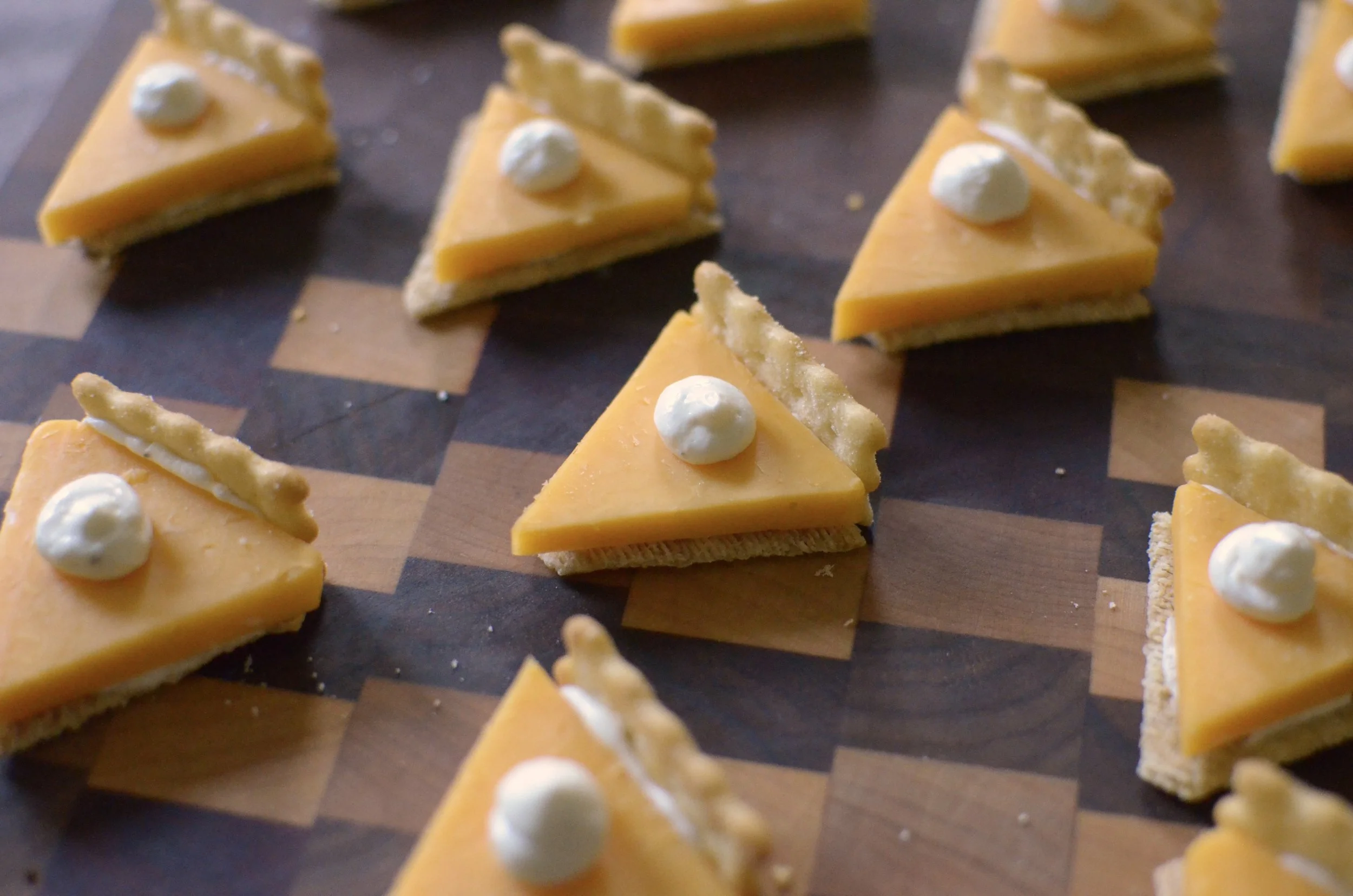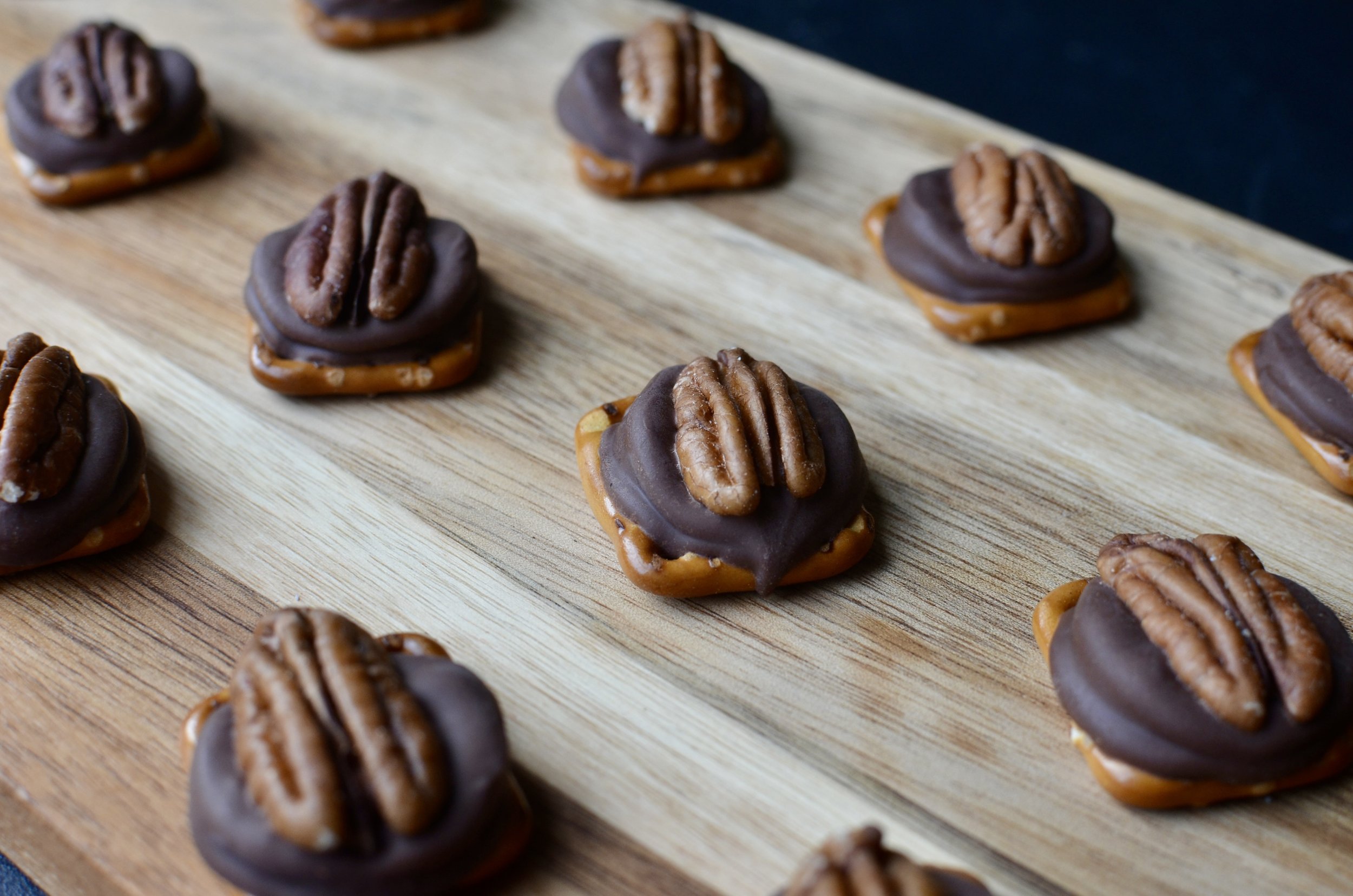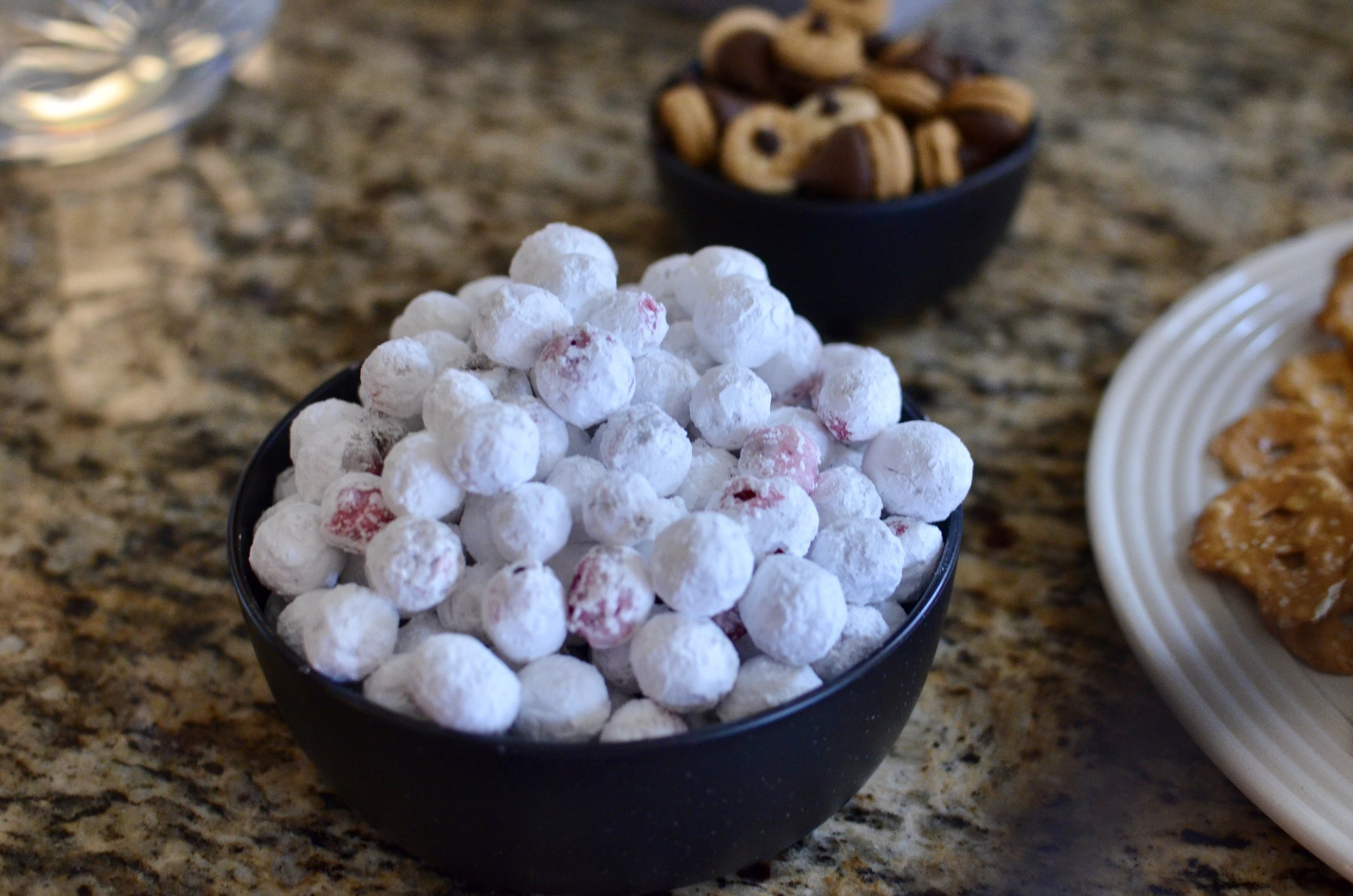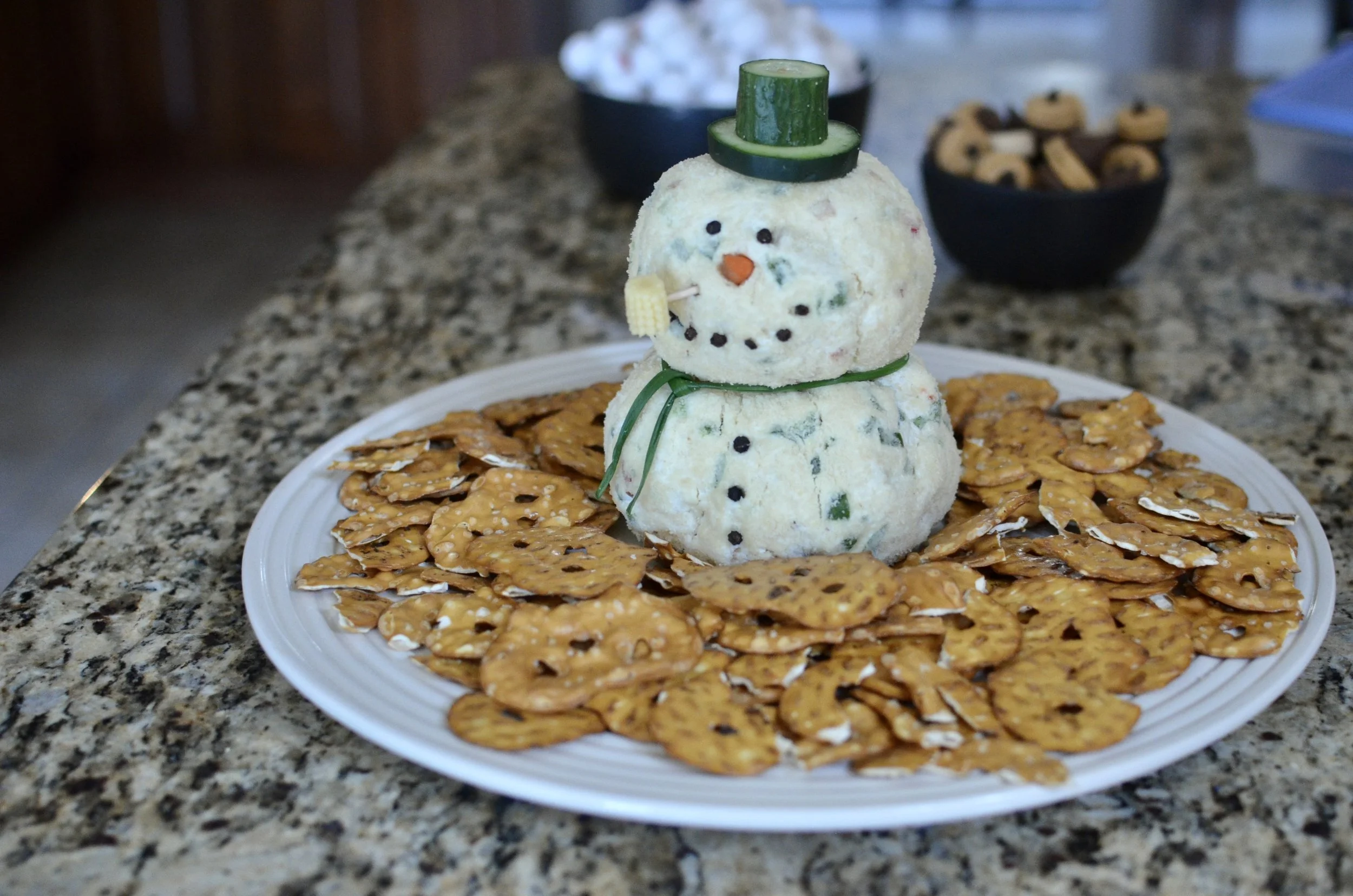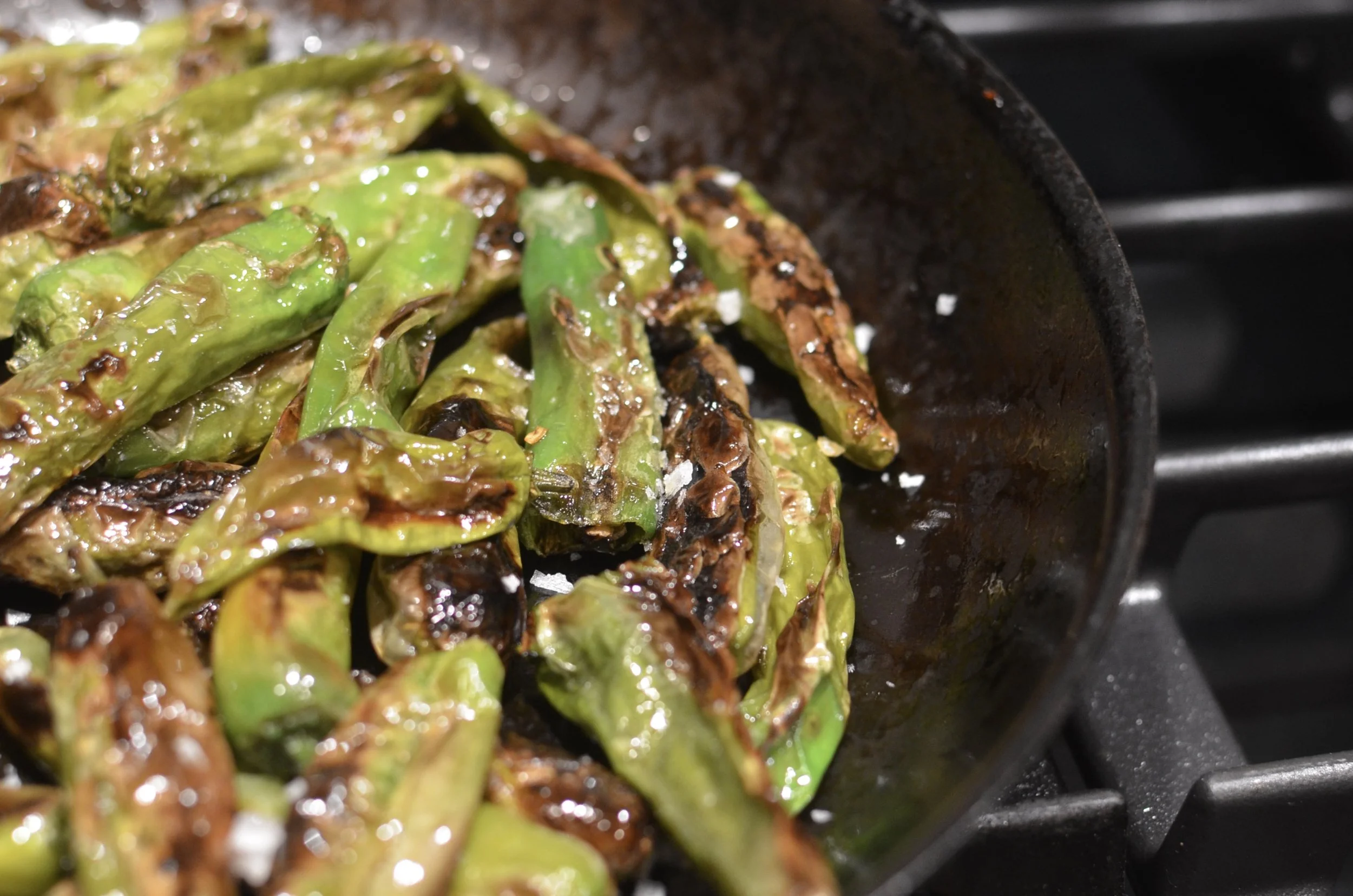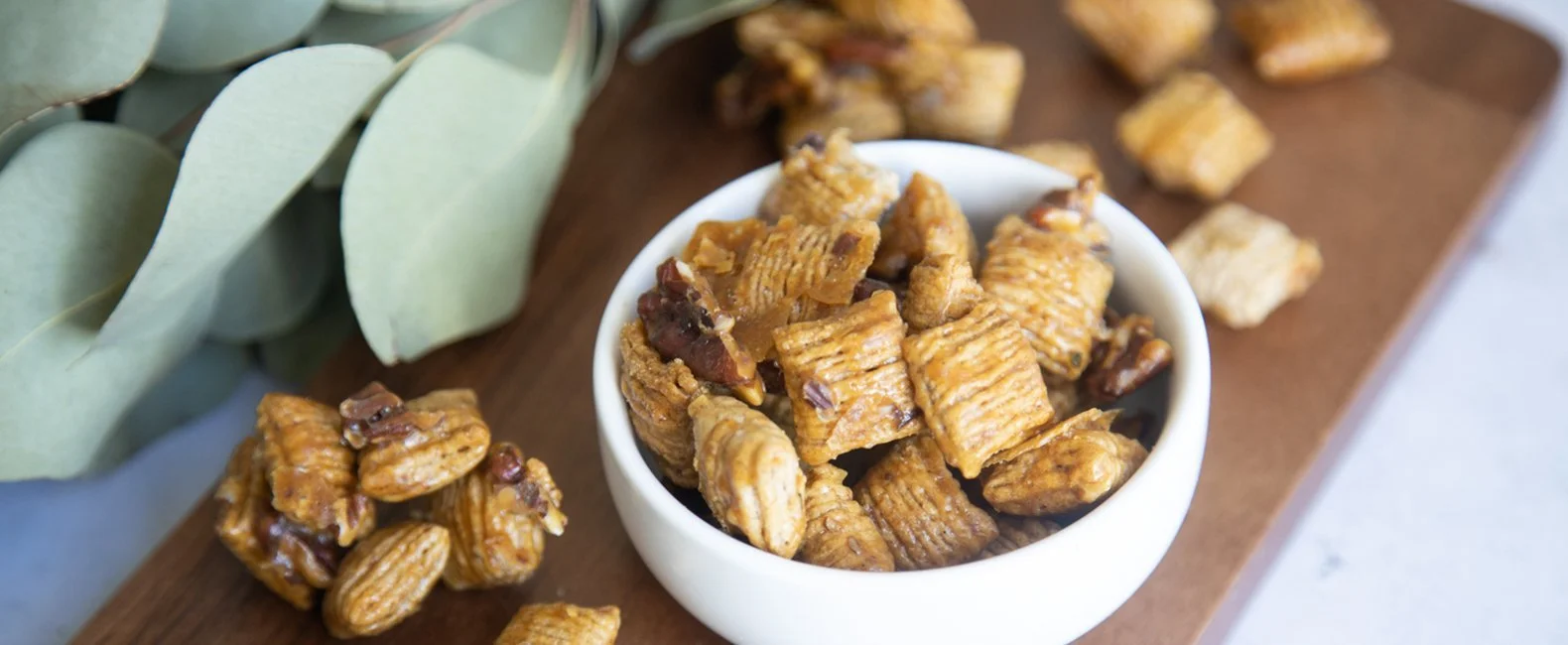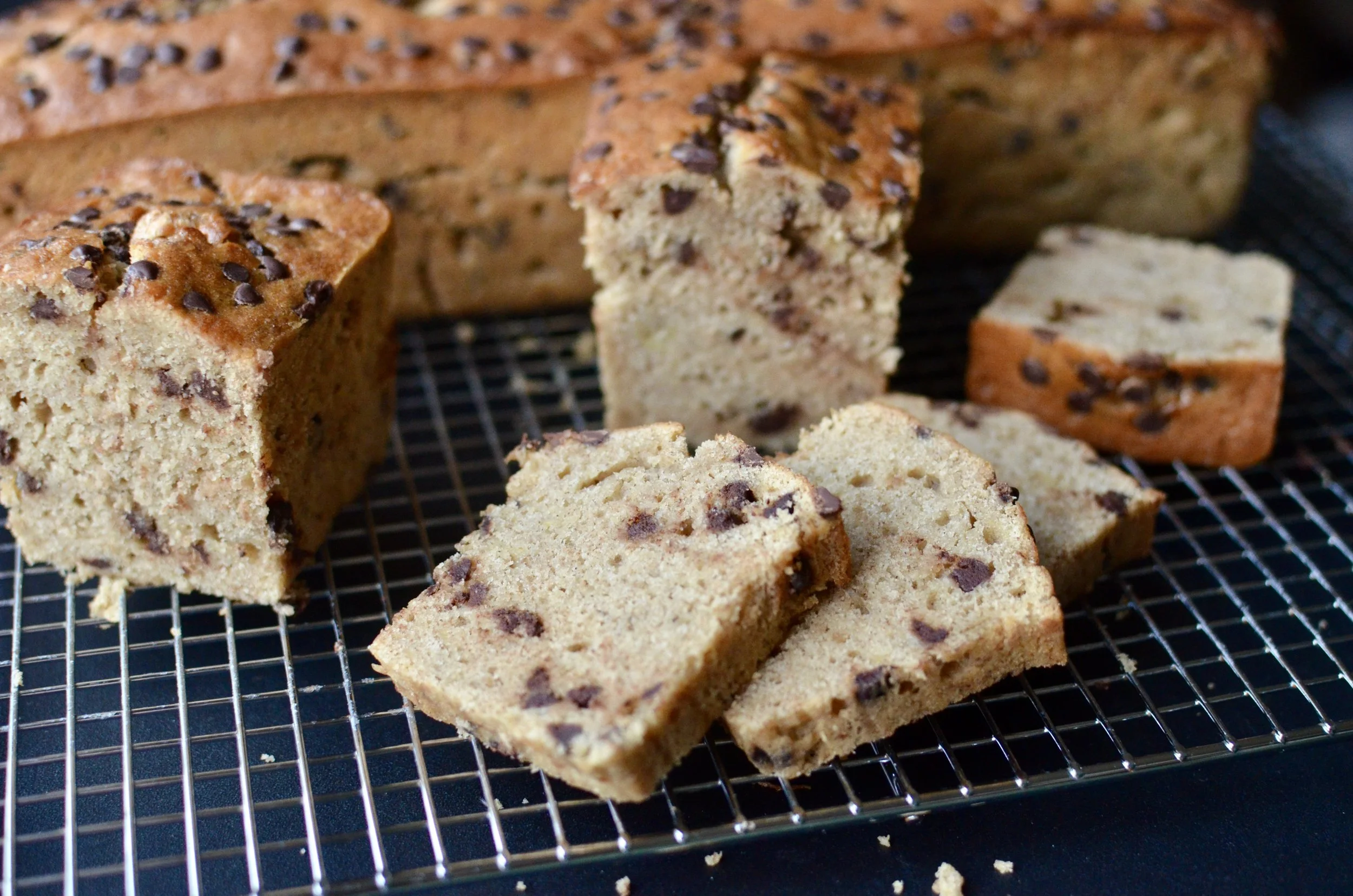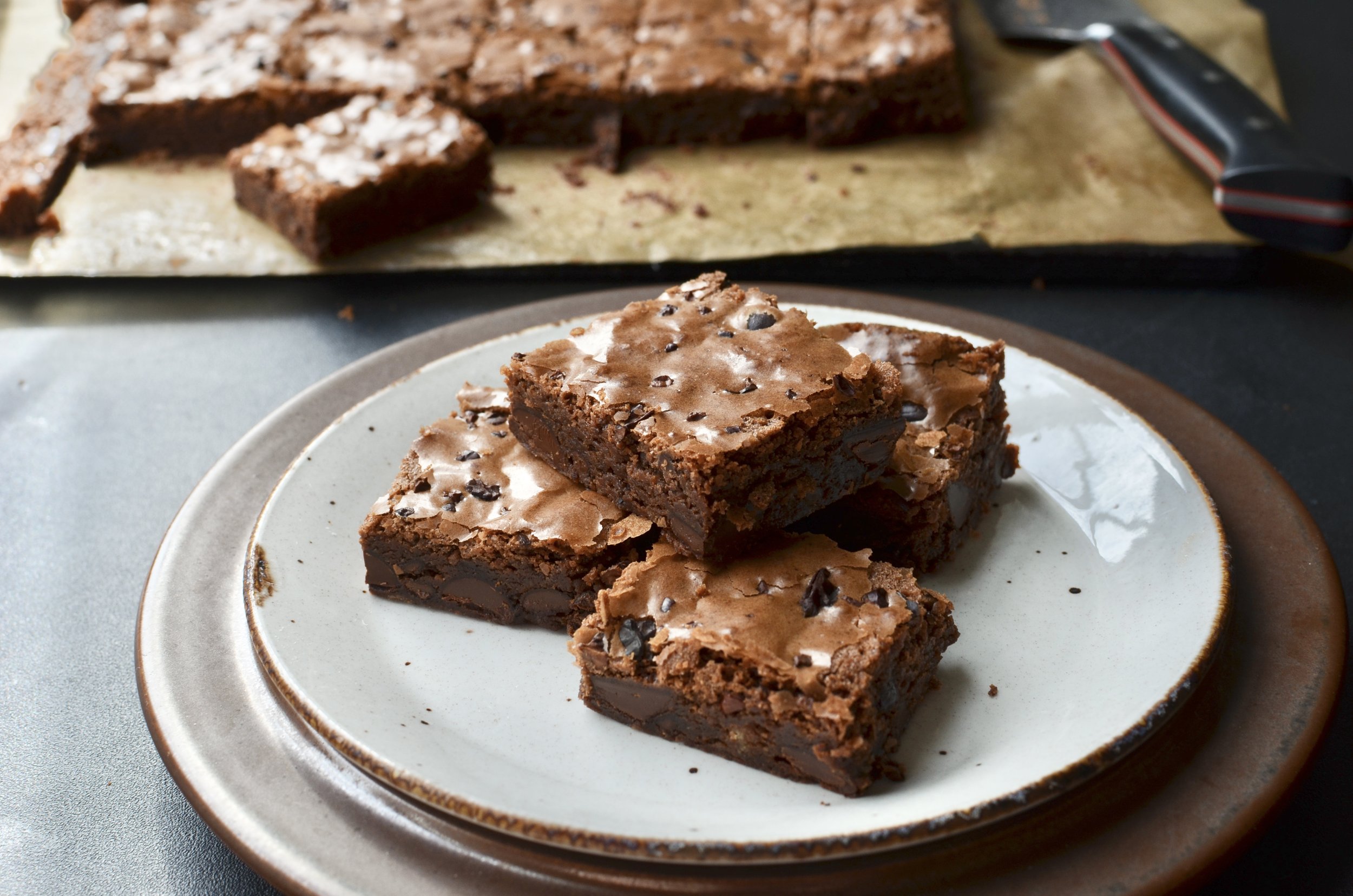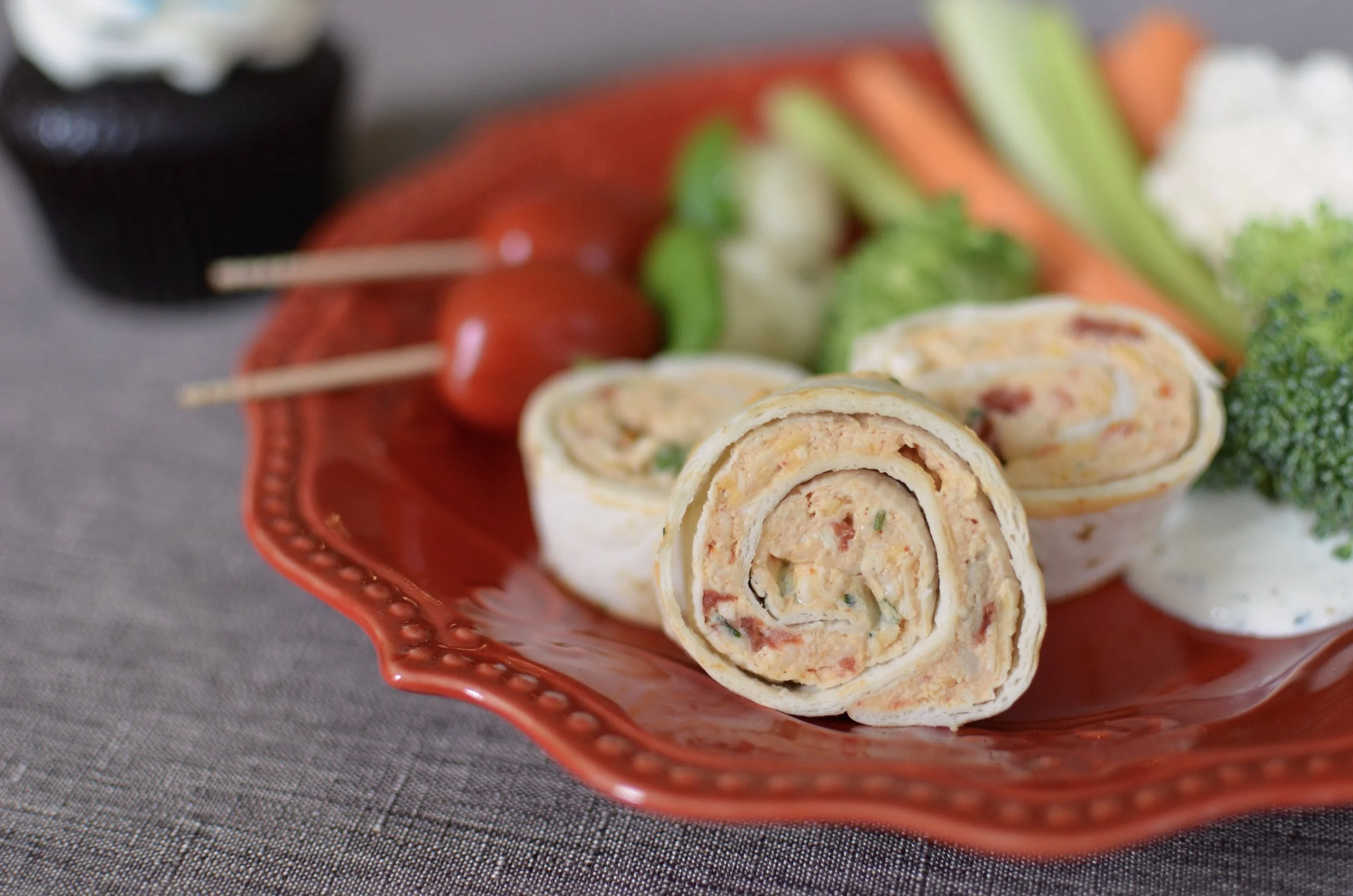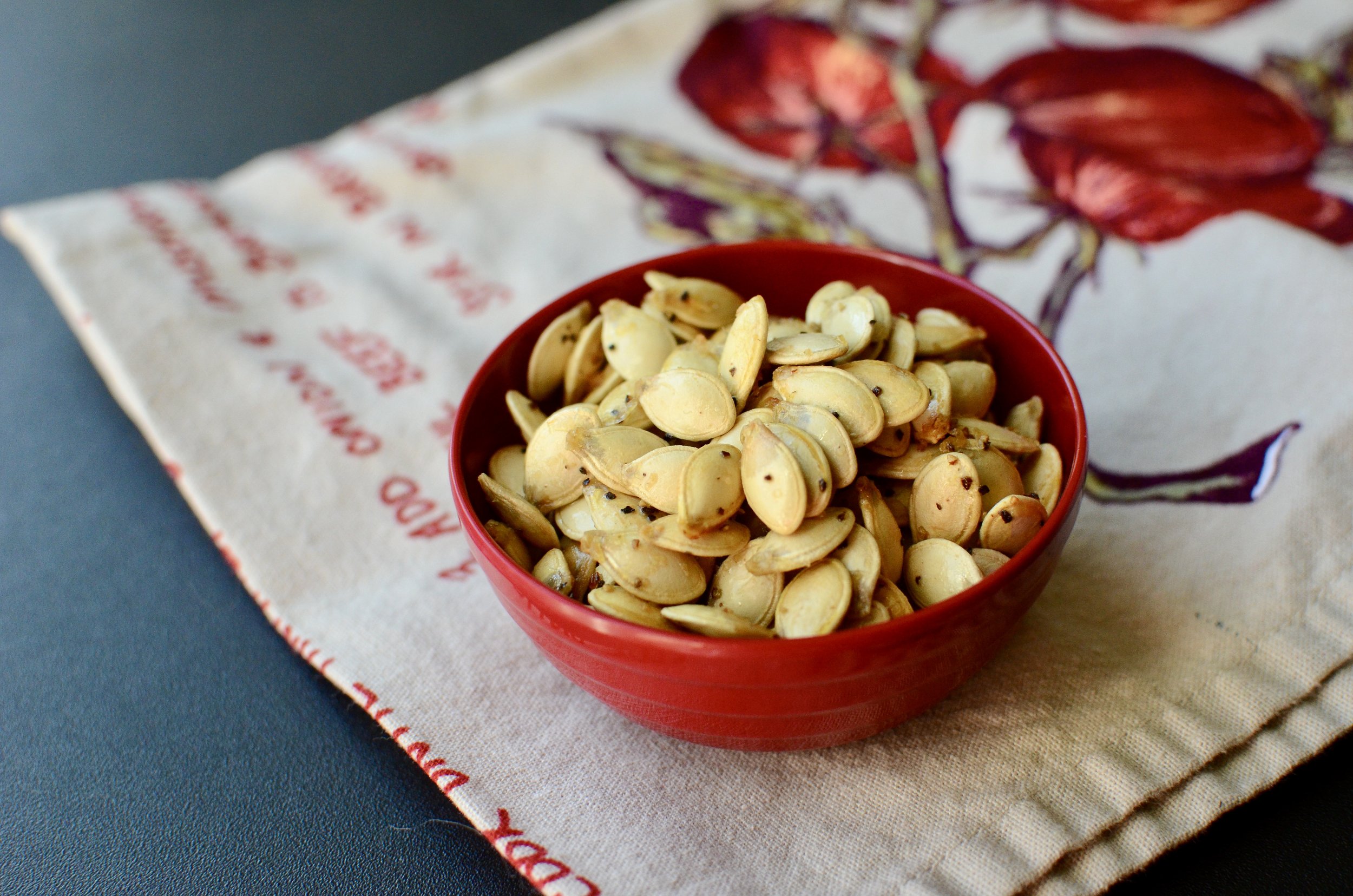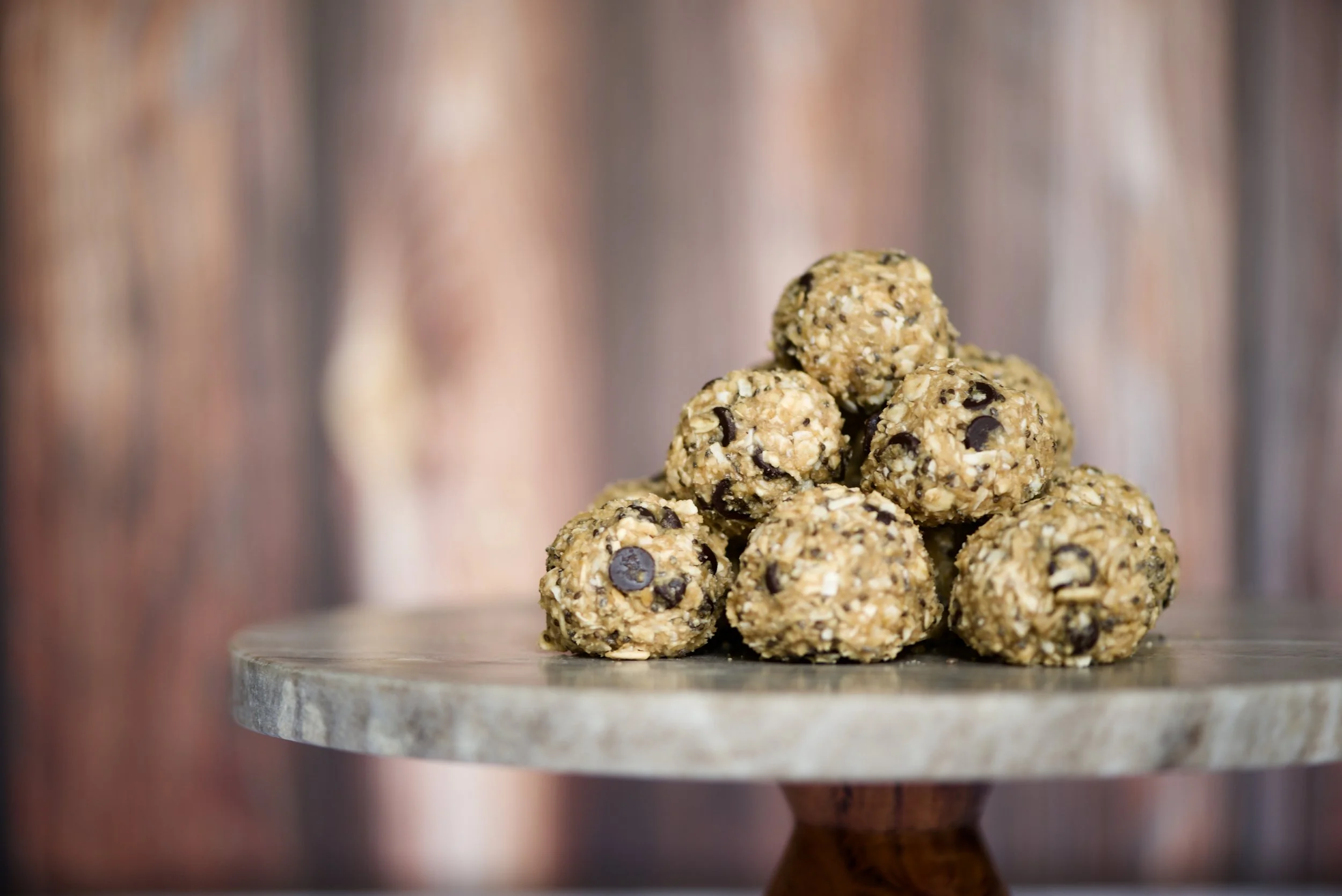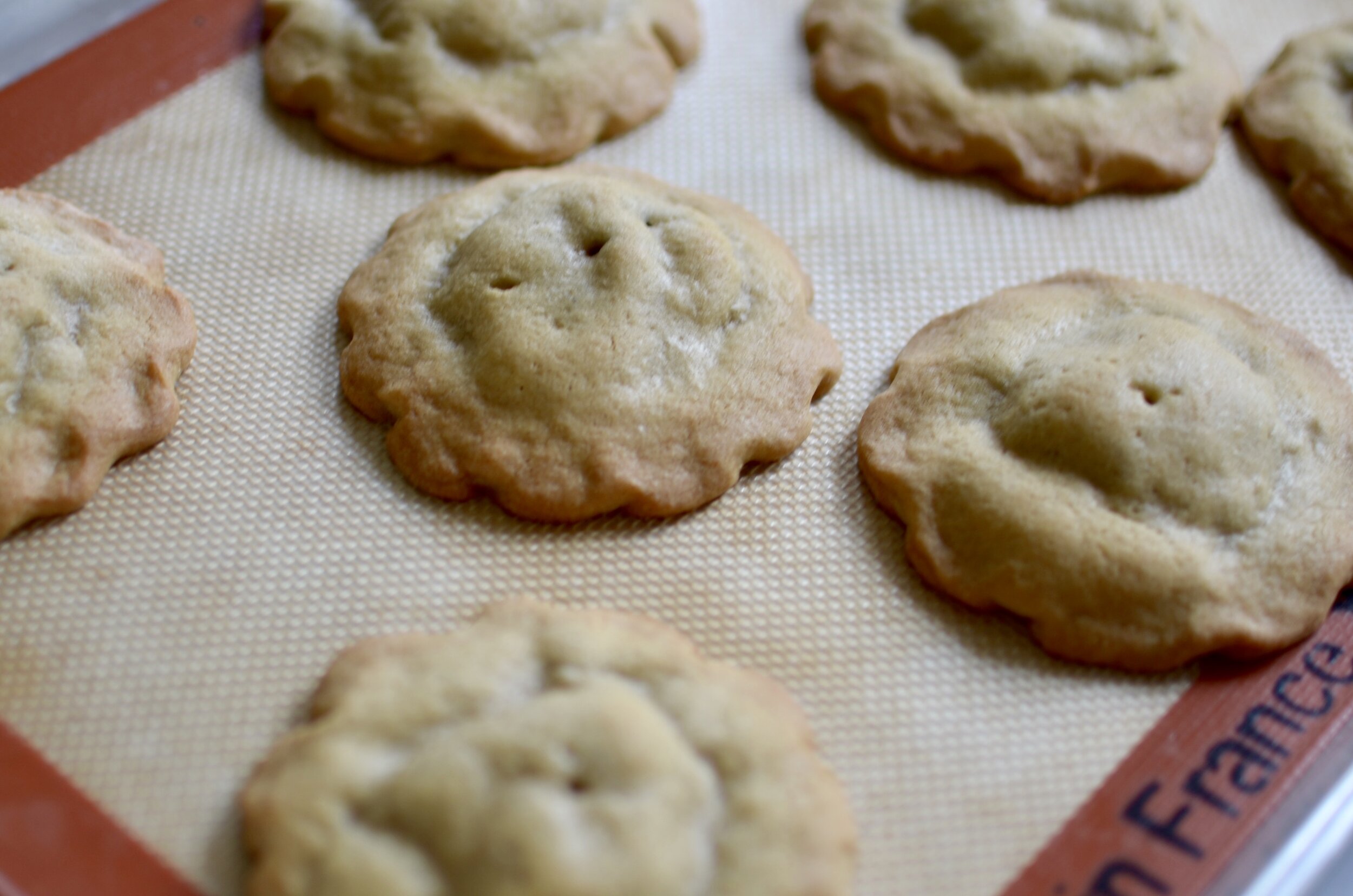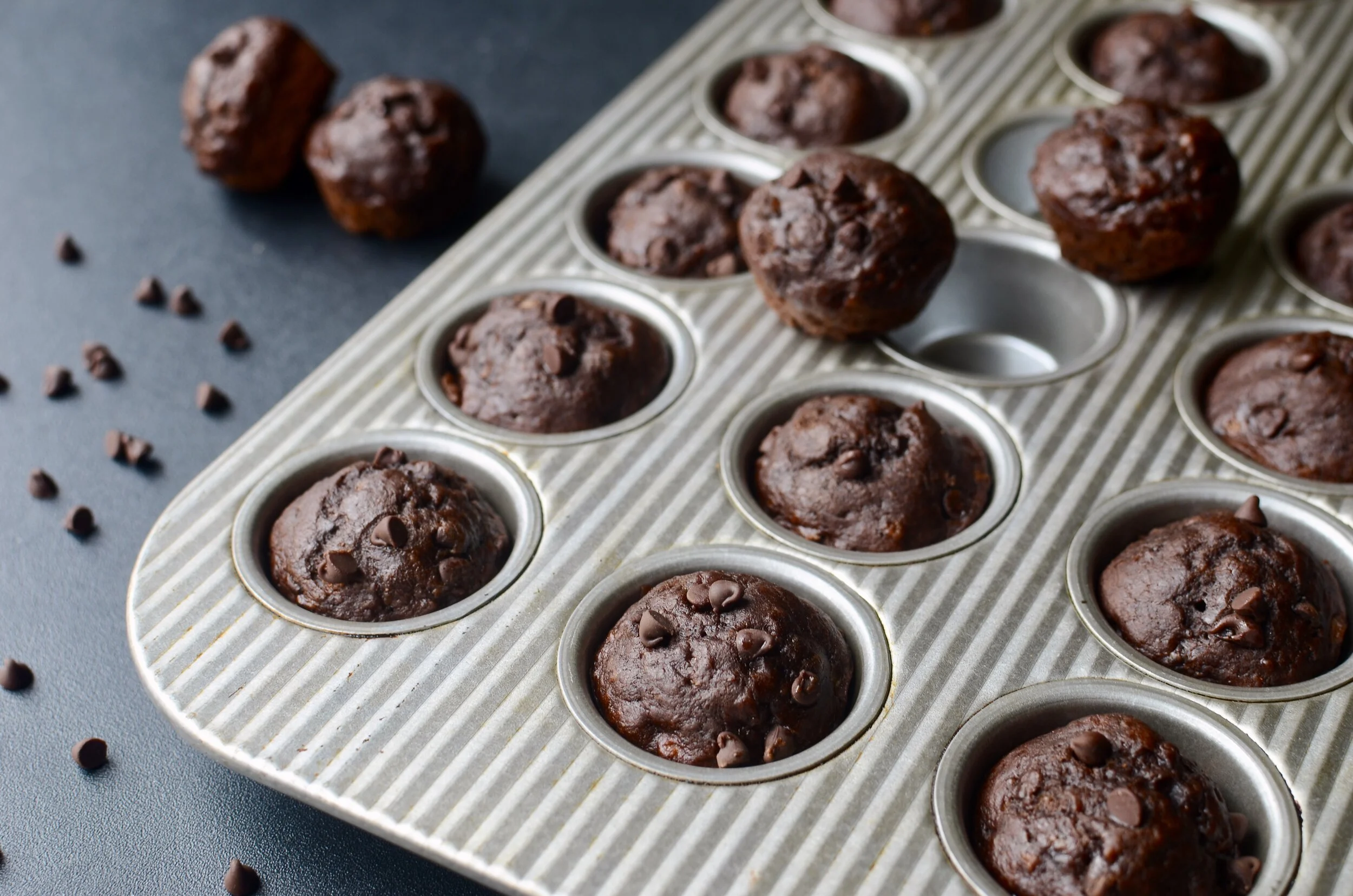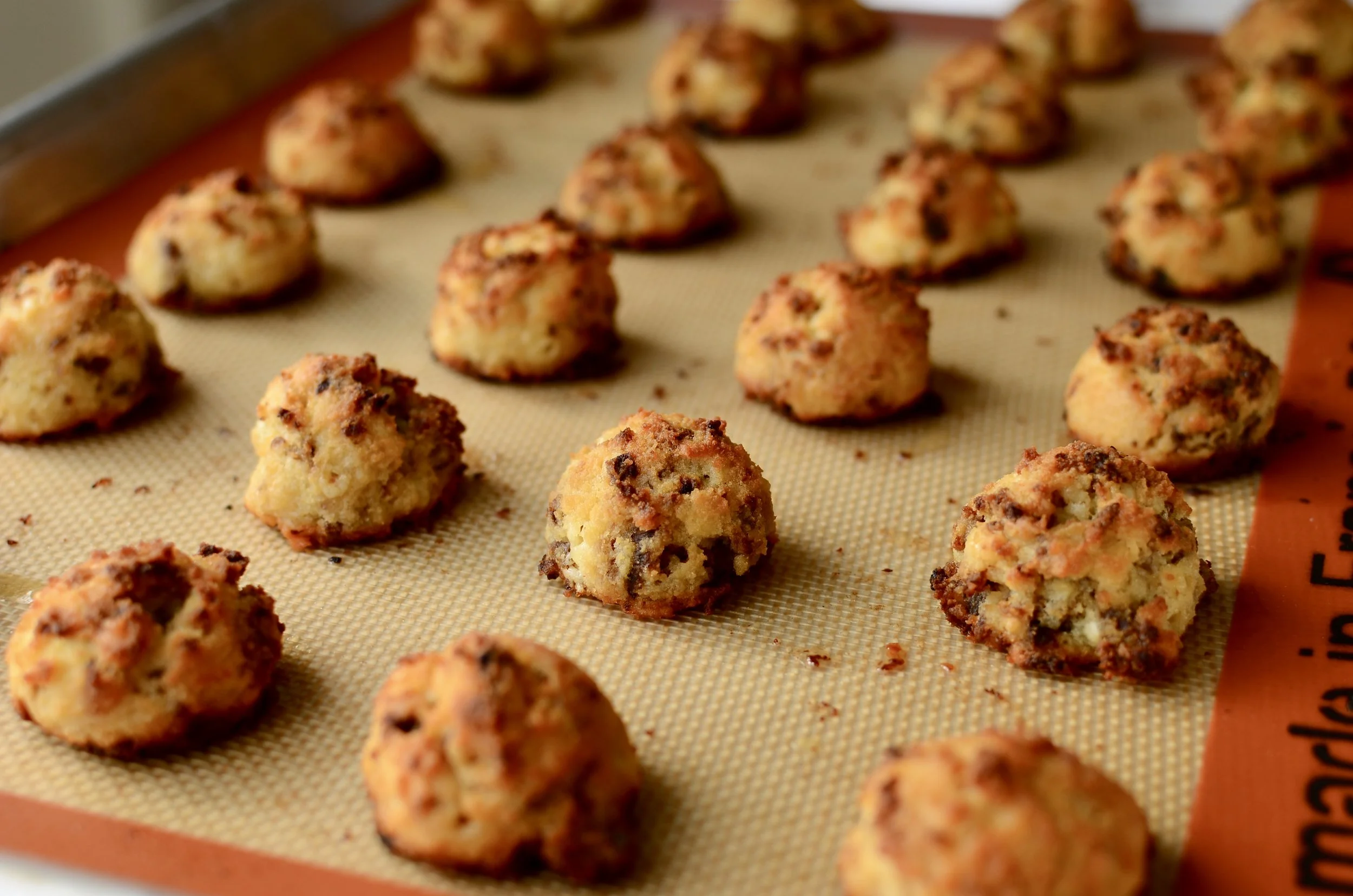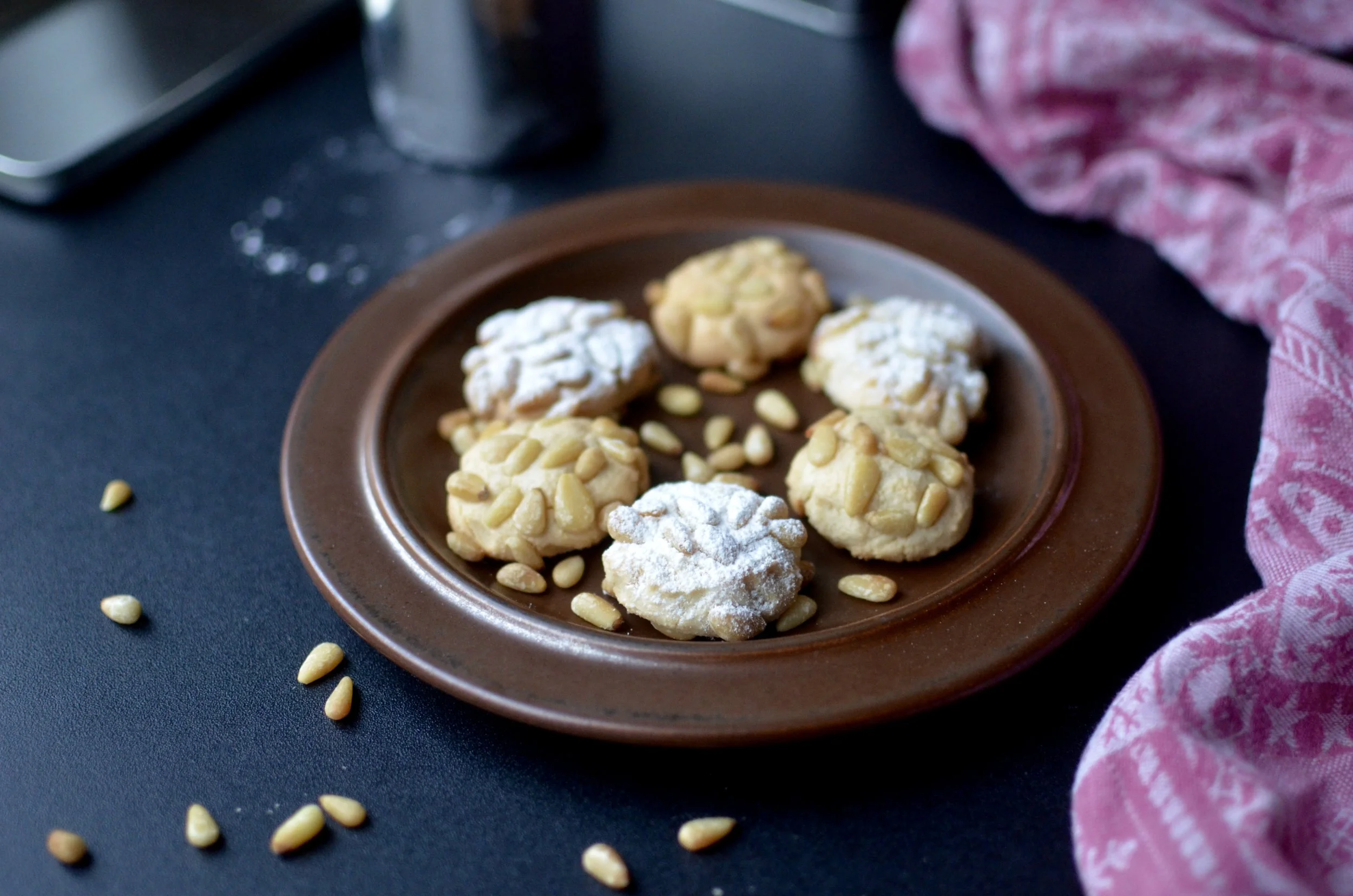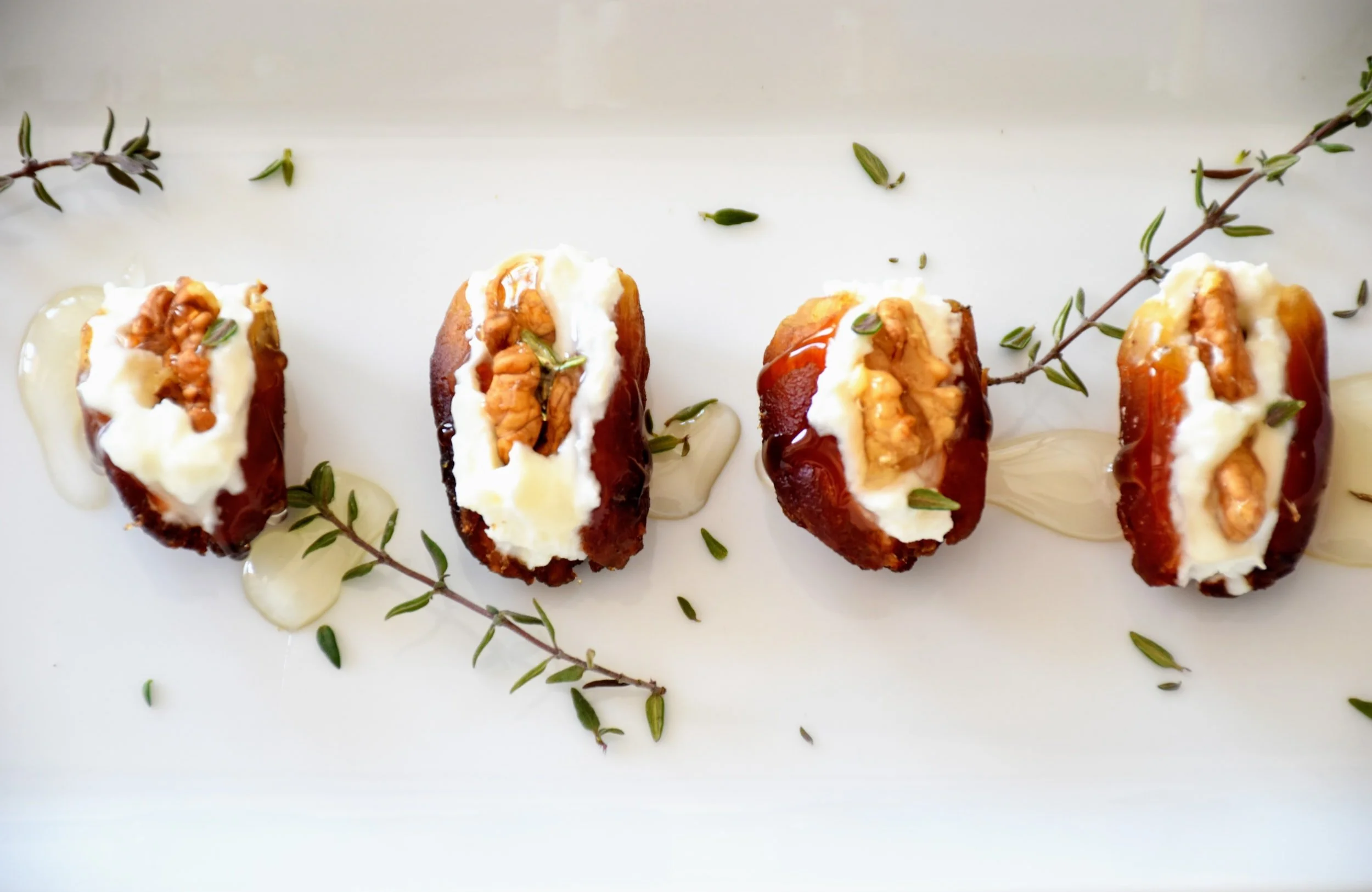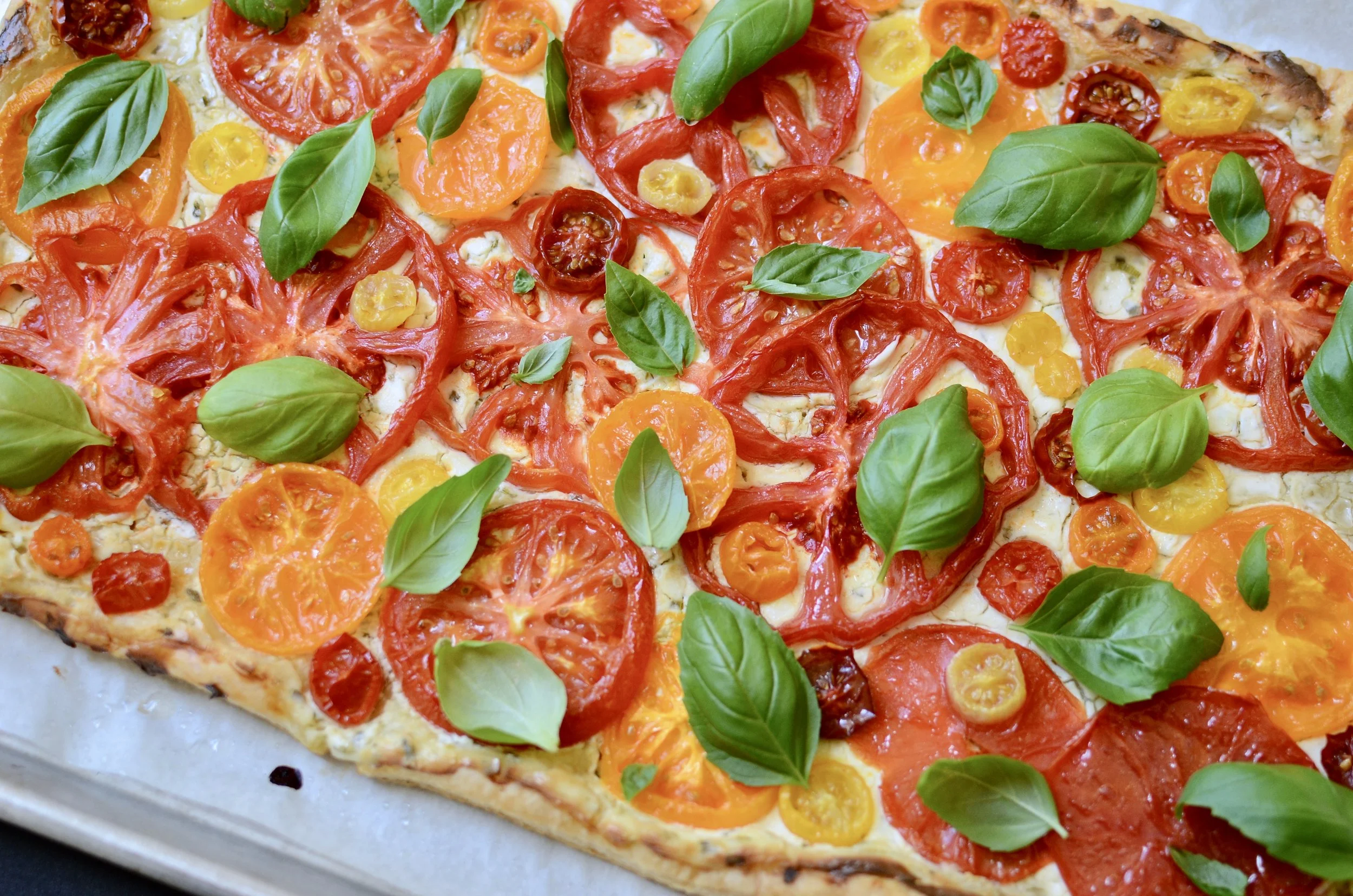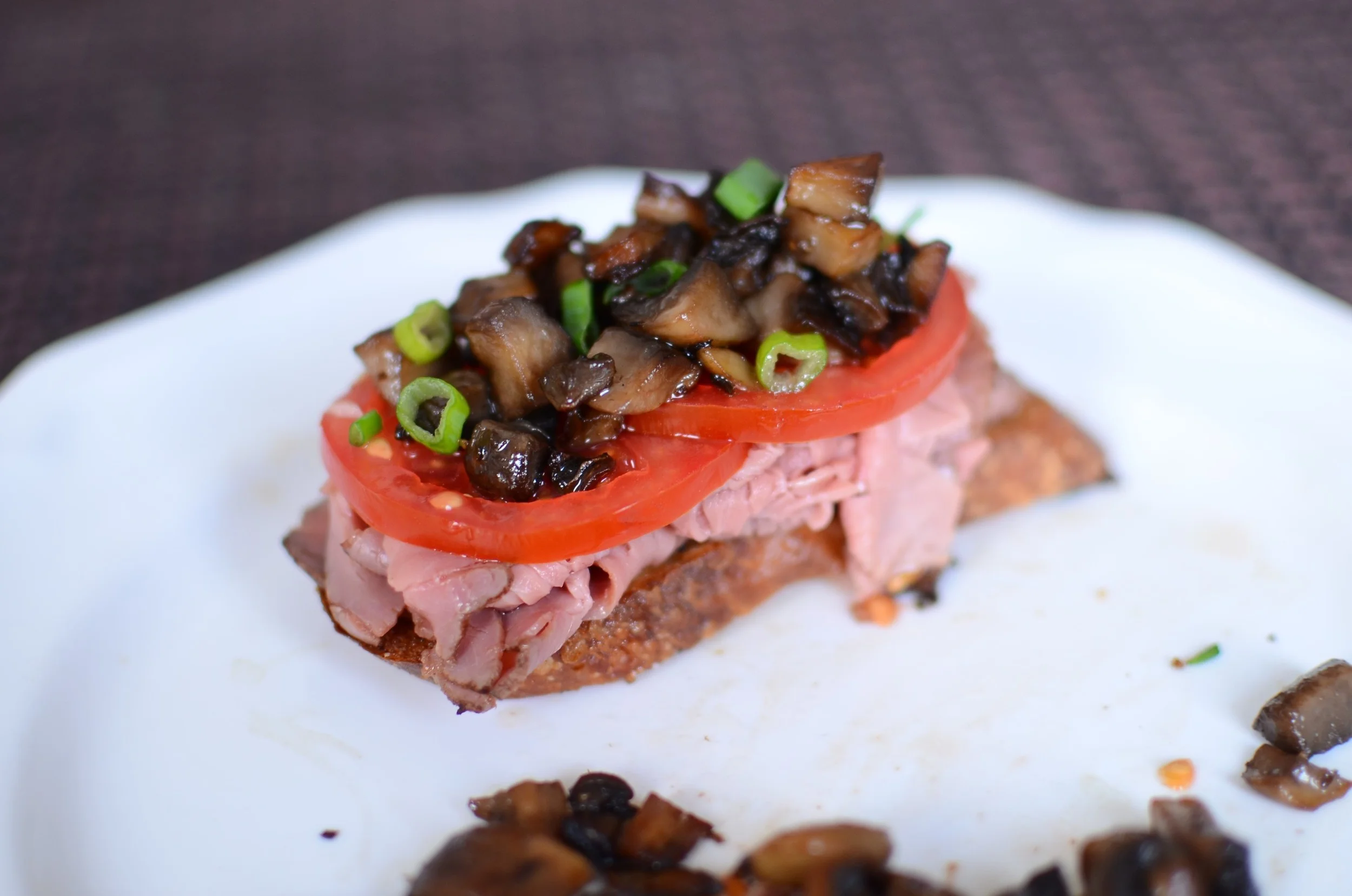Hershey's Kiss Acorns
Patricia @ ButterYum
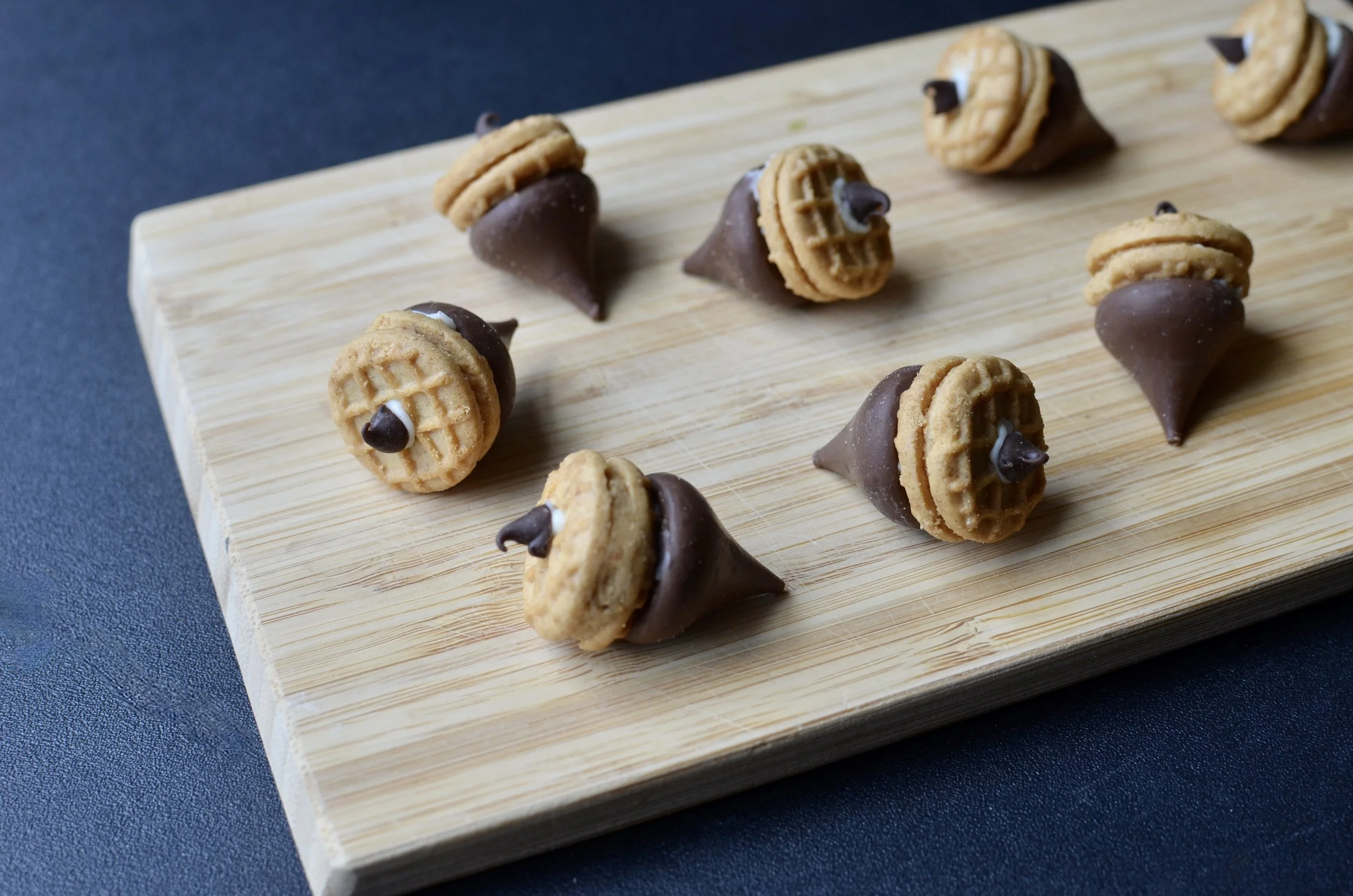
How cute would these these little acorn treats be at your next Fall-themed gathering? All you need are a few simple ingredients—Hershey’s kisses, small sandwich cookies, and mini chocolate chips. Super fun and absolutely adorable.
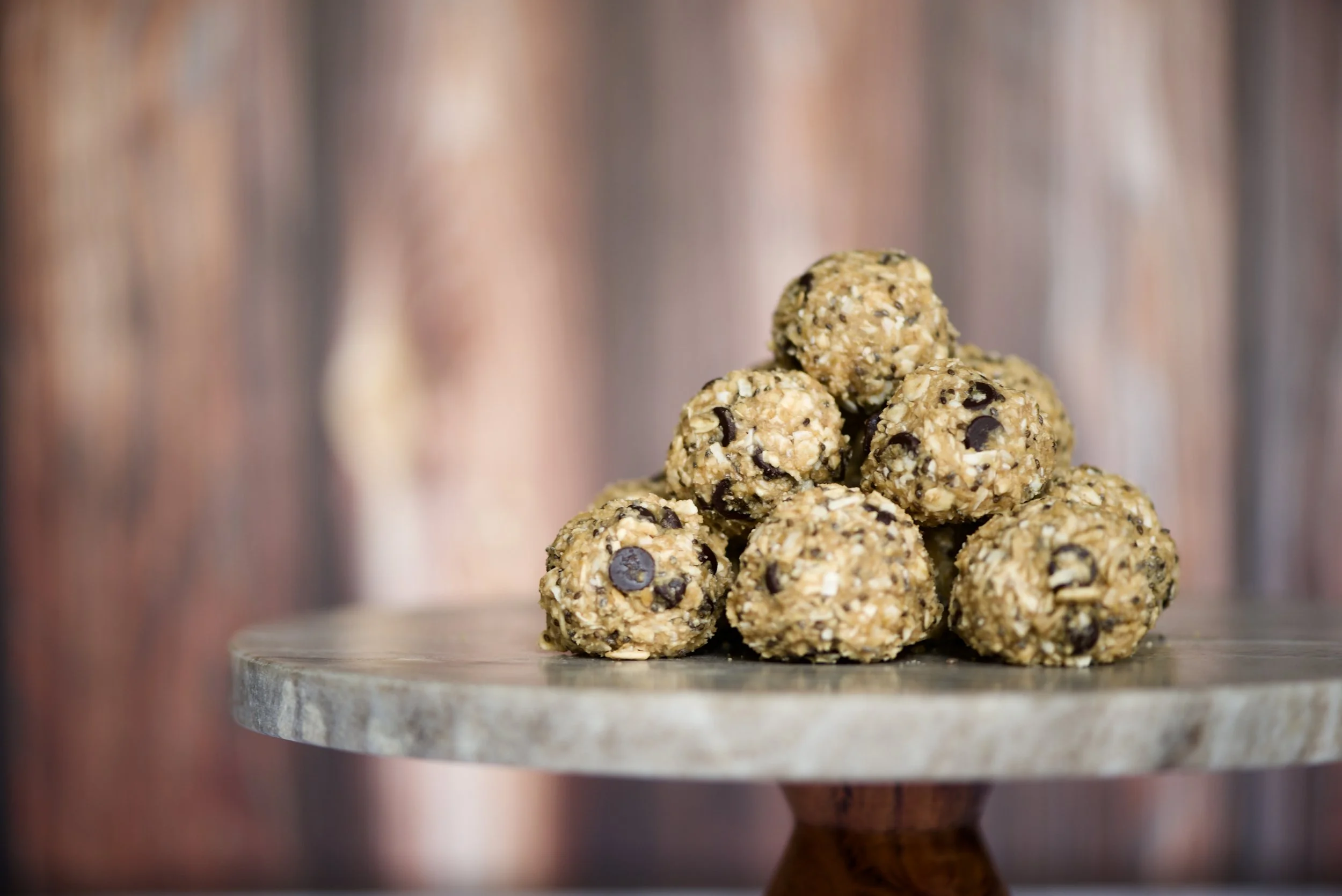
Items used to make this recipe:
(affiliate links)
Hershey’s Kisses https://amzn.to/48nGDdz
Nutter Butter Bites https://amzn.to/4o9ReOb
mini chocolate chips https://amzn.to/4pkus6Y
Hershey’s Kisses Acorns
make as many as you like
Printable Recipe
Ingredients
Hershey’s Kisses, unwrapped (milk or dark chocolate suggested)
Nutter Butter Bites or other small, round sandwich cookies (see notes below)
mini chocolate chips
Directions
Melt some chocolate and place in a piping bag (or zip-top bag), cut corner.
Pipe a small dollop of melted chocolate onto one nutter butter bite cookie and top with one Hershey’s kiss; allow chocolate to set.
Place a small dot of melted chocolate on the other side of the nutter butter bite to hold a mini chocolate chip in place; cool completely before serving.
Notes
You’ll need one mini chocolate chip for each “acorn”, plus more for melting.
You can see in the photo above, I used white chocolate to glue the mini chocolate chips in place - don’t do that. Melt some of your mini chocolate chips to use as the glue - it will blend in much better (see photo below).
Be sure to get Nutter Butter Bites — they are small, round cookies (about 1-inch in diameter), not peanut shaped. They can often be found sold in lunchbox snack packs. I have also been able to find small round vanilla cream sandwich cookies that were the same size at a local grocery store (again, sold in small lunchbox snack size packages).
